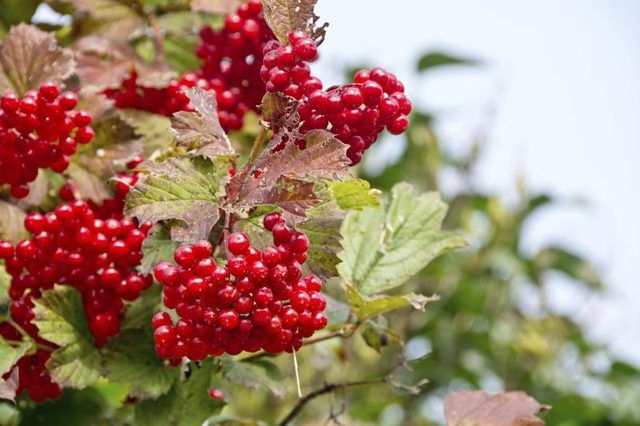Bulbs
Flower Basics
Flower Beds & Specialty Gardens
Flower Garden
Garden Furniture
Garden Gnomes
Garden Seeds
Garden Sheds
Garden Statues
Garden Tools & Supplies
Gardening Basics
Green & Organic
Groundcovers & Vines
Growing Annuals
Growing Basil
Growing Beans
Growing Berries
Growing Blueberries
Growing Cactus
Growing Corn
Growing Cotton
Growing Edibles
Growing Flowers
Growing Garlic
Growing Grapes
Growing Grass
Growing Herbs
Growing Jasmine
Growing Mint
Growing Mushrooms
Orchids
Growing Peanuts
Growing Perennials
Growing Plants
Growing Rosemary
Growing Roses
Growing Strawberries
Growing Sunflowers
Growing Thyme
Growing Tomatoes
Growing Tulips
Growing Vegetables
Herb Basics
Herb Garden
Indoor Growing
Landscaping Basics
Landscaping Patios
Landscaping Plants
Landscaping Shrubs
Landscaping Trees
Landscaping Walks & Pathways
Lawn Basics
Lawn Maintenance
Lawn Mowers
Lawn Ornaments
Lawn Planting
Lawn Tools
Outdoor Growing
Overall Landscape Planning
Pests, Weeds & Problems
Plant Basics
Rock Garden
Rose Garden
Shrubs
Soil
Specialty Gardens
Trees
Vegetable Garden
Yard Maintenance
How to Plant Cranberry Bushes
How to Plant Cranberry Bushes. The American cranberry bush (Viburnum trilobum) is an easy-care, deciduous shrub that grows in U.S Department of Agriculture plant hardiness zones 2 to 7. Throughout late spring, the plant sprouts an abundance of fragrant, white flowers that develop into bright red berries toward summer's end and into autumn. Many...

The American cranberry bush (Viburnum trilobum) is an easy-care, deciduous shrub that grows in U.S Department of Agriculture plant hardiness zones 2 to 7. Throughout late spring, the plant sprouts an abundance of fragrant, white flowers that develop into bright red berries toward summer's end and into autumn. Many varieties keep their berries intact well into the winter months. The dark green maple-leaf shaped foliage turns to brilliant shades of red, yellow and purple when fall arrives, giving this bush multiple seasons of interest and vivid color.
Planting
The American cranberry bush will spread 5 to 15 feet wide and high depending on the variety, so consider the mature size of your shrub when determining the planting location and spacing. Dig a hole two to three times as wide as the shrub's root ball and only to the depth of the container holding the bush. Cranberry bushes prefer a well-drained, fertile, loamy site with a pH between 4.5 and 7. If your soil is clay or sand, mix a shovelful of compost into the soil that is going back into the hole, to improve its condition. When the planting site is ready, remove the bush from its container and center it in the hole, fill it part way with soil, and then to the top with water. As soon as the water drains, fill the hole with the remaining soil and water well, saturating the planting area.
Planting Conditions
Place your American cranberry bush in a spot that receives full sun -- 6 hours or more per day -- to part shade -- 4 to 6 hours of sun per day. This bush is often planted as part of a shrub border, in foundation plantings or used to create a thick hedge. For a dense, solid screen, place the plants 2 to 3 feet apart. For a more open border, plant the shrubs so that when fully grown the branches are barely touching. For example, if your spread is 10 feet, plant the shrubs 5 feet apart.
Water Requirements
Keep new cranberry plantings well watered the first few weeks, to help ensure healthy root growth. Once established, the cranberry can withstand some drought, but during dryer spells, when rainfall is less than 1 inch each week, water the cranberry bush to ensure the soil remains moderately moist; this shrub prefers a typically higher moisture level than many other deciduous shrubs and should not remain dry for long. Add a layer of compost and a 2-inch layer of mulch every spring to help the soil remain fertile, the area moist and the weeds out -- ensure mulch does not touch the trunks.
Additional Care After Planting
The American cranberry has a dense, rounded growth habit when regularly pruned. Lack of pruning contributes to the leggy, open growth often seen in natural settings. Prune to shape the shrub after it has finished flowering, but remove damaged or dead wood any time throughout the season to keep the shrub healthy. The American cranberry does not suffer from any significant pest or disease problems but can play host to the viburnum leaf beetle (Pyrrhalta viburni P.). This insect will quickly defoliate cranberries when left unattended. After egg laying has ceased, in October, prune and destroy infected limbs to remove the risk of leaf beetle damage. When selecting cranberries for your garden, look for resistant varieties to avoid infestations by the leaf beetle altogether.